If you are new to online marketing, you may have heard the term “programmatic advertising” recently and have been wondering what it is. Programmatic advertising has revolutionized the way companies advertise their products and services in recent years, as it allows them to work smarter, not harder – creating an easier process for targeting quantitative audiences as only those who meet specified criteria will be exposed to ads. In this guide, we’ll explore programmatic advertising in depth so that by the end of reading this post, you will have a complete understanding of how it works and how your business can benefit from using it.
Introduction to Programmatic Advertising
In today’s world, digital marketing has improved a lot to the point that programmatic advertising results from improved technology. In this article, we will talk about programmatic advertising and how you should use it.
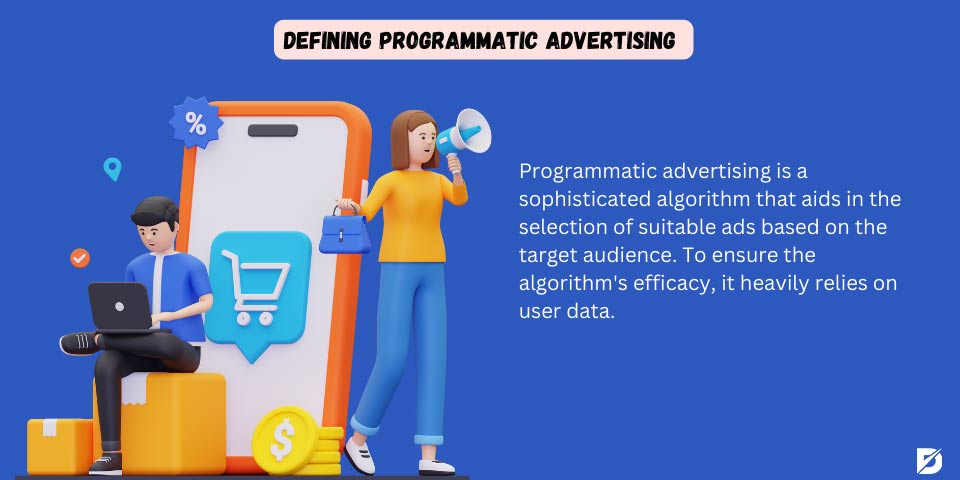
Defining Programmatic Advertising
Programmatic advertising is an algorithm that helps you choose which ad you should choose according to the target audience. This algorithm relies on user data in order for that algorithm to work properly. With its feature to help the target audience see the ads they are interested in, digital programmatic advertising is a popular algorithm that most website owners use for their website introductions through related ads for their target audience. Regular users of programmatic advertising follow every algorithm update to improve their website and use the algorithm’s full potential. Learn more about behavioral targeting.
The Evolution of Digital Advertising
The long process of evolution of digital advertising consisted of creativity and improvement in it. Let’s look at the important events in the evolution of digital advertising.
- Early Web Advertising (1990s): Banner Ads were the first type of ads that started the evolution of the digital advertising journey. Their design was simple, and these ads were put on the top of the websites. After Banner Ads, Pop-Up Ads started to appear and became the source of attention for users.
- Search Engine Advertising (Late 1990s – Early 2000s): In between the late 1990s and early 2000s, Google’s AdWords became popular and started a new era with a new advertising type called pay-per-click (PPC) advertising. With this new advertising, advertisers can offer relevant keywords to represent their websites with relevant ads in search results.
- Social Media Advertising (Mid-2000s): Most people have joined social media with Facebook first. Back in the days when Facebook was popular among users, Facebook launched Facebook Ads in order for advertisers to target relevant users. Learn more details about how to create Facebook Ads.
- Video Advertising (Mid-2010s): In the golden era of the online video platform YouTube, the opportunity for video ads became possible due to the popularity of YouTube. Afterward, pre-roll ads (short ads that appear before the main video) and mid-roll (short ads that appear in the middle of the video) also became popular.
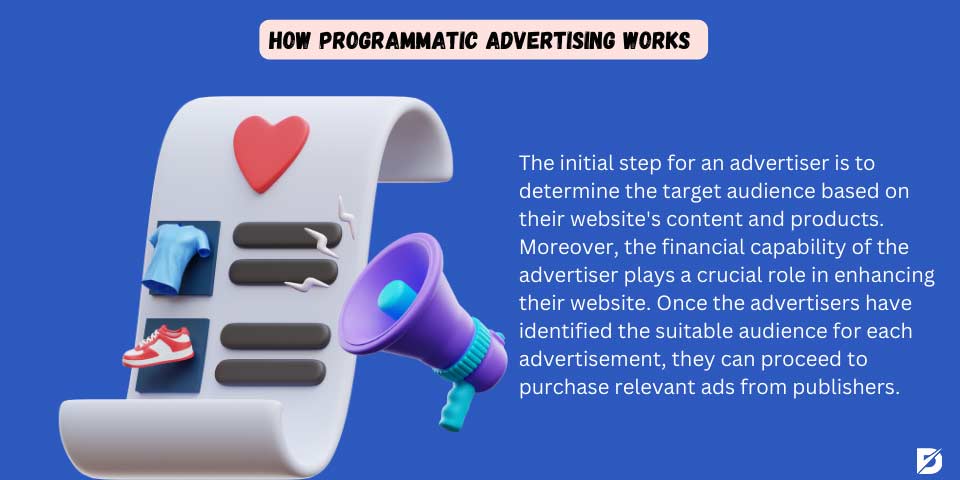
How Programmatic Advertising Works
In the programmatic advertising platform, the first thing an advertiser should do is decide which audience an advertiser should target according to their website’s content and products. An advertiser’s financial power is also important for their website’s improvement, but if you do not know which audience you will target, you will have spent your money for the wrong purposes. After advertisers decide which ad is for which audience, they will buy related ads from publishers. Learn more about their search intent.
Publishers sell related ads to advertisers from their Supply-Side Platform, where they keep every kind of ad inside of the Supply-Side Platform. Publishers and advertisers buy and sell these ads in ‘’Ad Exchange’’ platforms. The ads from the Supply-Side Platform enable real-time auctions to maintain their work. If users enter a certain website, an ad slot for that website will be available, and a real-time auction will do its job at the same time.
In the process of real-time auction, the Demand-Side Platform, which allows advertisers to optimize their ads, will evaluate the users who visit a certain website, and they will give an offer to the targeting parameters. The winner of that real-time auction will get their ad displayed on the publisher’s website.
The Role of Ad Exchanges and SSPs (Supply Side Platforms)
Both Ad Exchanges and SSPs are a whole. Simply put, ad exchanges provide real-time auctions to advertisers so that they can give an offer to an ad inventory; SSPs allow publishers to adjust their ad space.
Understanding DSPs (Demand Side Platforms)
DSPs in programmatic advertising allow advertisers to buy and adjust their ad inventory. With this, advertisers can focus on a certain audience and optimize their campaigns.
Real-Time Bidding (RTB) vs. Programmatic Direct
Both RTB and Programmatic Direct have different approaches because they have their methods.
If you are an advertiser and your objective is being able to optimize your campaigns and efficiency, your choice should be RTB. On the other hand, if you are an advertiser and want to access premium ad inventory for your brand, you should choose Programmatic Direct.
For instance, in real-time auctions, ad impressions are constantly bought and sold automatically. RTB is there to be involved in these real-time auctions. On the other hand, Programmatic Direct is only involved in the guaranteed purchases and selling of ad inventory from publishers.
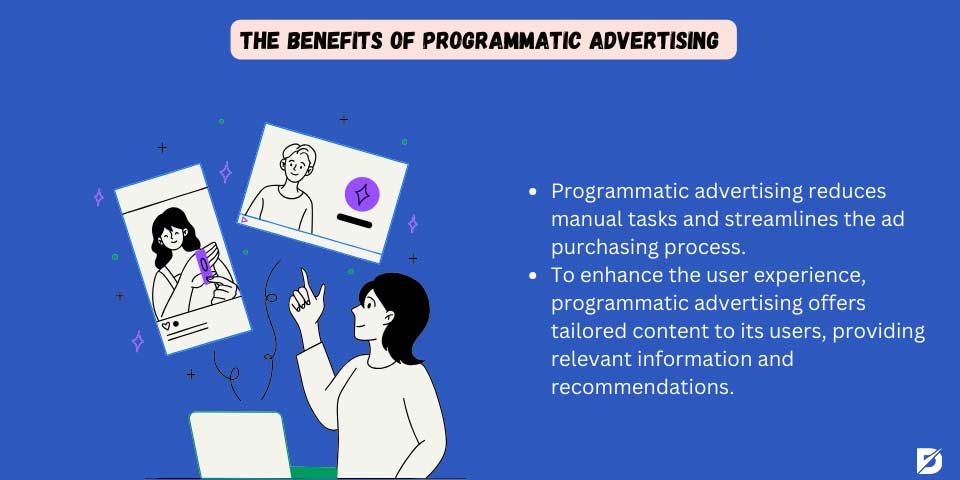
The Benefits of Programmatic Advertising
The way programmatic advertising provides advertisers and publishers with many benefits is why programmatic advertising is popular today. Let’s look at the benefits of programmatic advertising:
- Efficiency: Programmatic advertising lowers the manual tasks and offers an automated ad purchase process. In addition, programmatic advertising also offers real-time auctions, which allows advertisers to decide quickly according to targeting criteria.
- Accurate Targeting: There are two types of targeting in programmatic advertising. One of them is data-driven targeting which helps you to target specific audiences according to interests. The other one is called contextual targeting, which allows ads to be displayed in relevant places in order to meet with relevant users.
- Personalization: In order to improve the user experience, programmatic advertising provides related content to its users, which is called ‘’Tailored Content’’. In addition, one of the exciting things about improving the user experience is that advertisers can create different types of ads in order to reach different audiences.
Precision and Personalization
Precision and personalization are both important elements in programmatic advertising.
Simply put, precision targeting places the ads contextually in relevant places to increase the ad relevance to the related users. Personalization targets the users who have previously targeted a certain website or product so that it can recommend related interests to that user.
Efficiency and Real-Time Adjustments
Efficiency and real-time adjustments are crucial in programmatic advertising, so they are important for achieving your goals.
One of the best things in terms of efficiency in programmatic advertising is that it automatically handles the purchasing process. On the other hand, if we talk about real-time adjustments, we can give an example of the constant optimization updates of programmatic advertising. It constantly checks if one of the ads is not working well. If an ad is not working, it changes offers or stops the ads which are not working.
Greater Reach and Scalability
Greater reach in programmatic advertising enables you to reach the masses to the point you have managed to reach the international markets. Scalability is the dynamic usage of your budget. One of the best ways for advertisers to use their budgets is by dividing the resources into the parts they think will be effective.
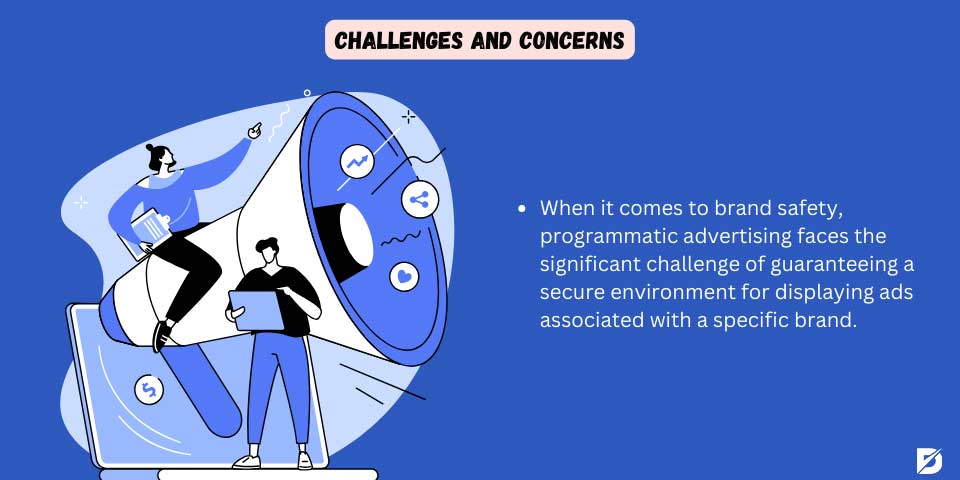
Challenges and Concerns with Programmatic Advertising
Regarding brand safety, programmatic advertising may have trouble with ensuring a safe place for ads for a certain brand is the real challenge. As a result, brands will be more likely to be concerned about the potential decrease in their reputation.
The other example is the ad fraud issue in programmatic advertising. Ad fraud can cause waste of ad spend by including non-human traffic. Ultimately, the advertisers can be concerned about the money they wasted on fake clicks.
Addressing Privacy and Data Usage
Addressing privacy and data usage is all about building trust with users. If you cannot make users trust you, there will be no trust between you and your users. To build trust with users, you first need to be transparent about data collection. That way, you have a chance to earn their consent by revealing your intentions.
Ensuring Ad Viewability and Avoiding Fraud
Ensuring the position of your ad and predicting where the users will check is important. And in order to avoid fraud, you should implement bot detection into your website to prevent fake clicks.
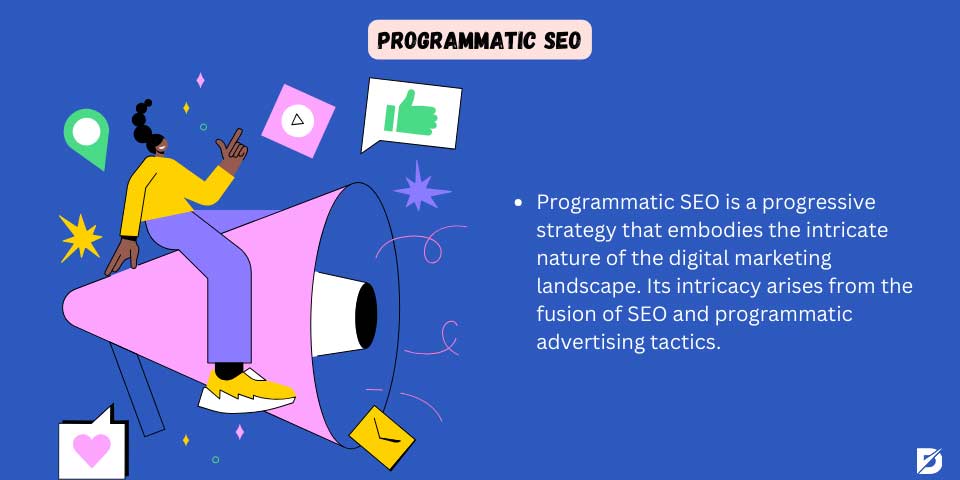
Programmatic SEO: Bridging Advertising and Search Optimization
Programmatic SEO is an improving strategy that represents the complicated nature of the digital marketing environment. Its complexity is due to the combination of SEO and programmatic advertising strategy.
What Is Programmatic SEO?
Programmatic Search Engine Optimization is a digital marketing strategy comprising programmatic advertising and SEO methods.
Benefits of Combining Programmatic and SEO Strategies
Programmatic and SEO strategies can provide you with a competitive advantage that you can increase your brand’s reputation. They can provide you a flexible content that adjusts according to user interests. In addition, it can provide you an optimized keywords.
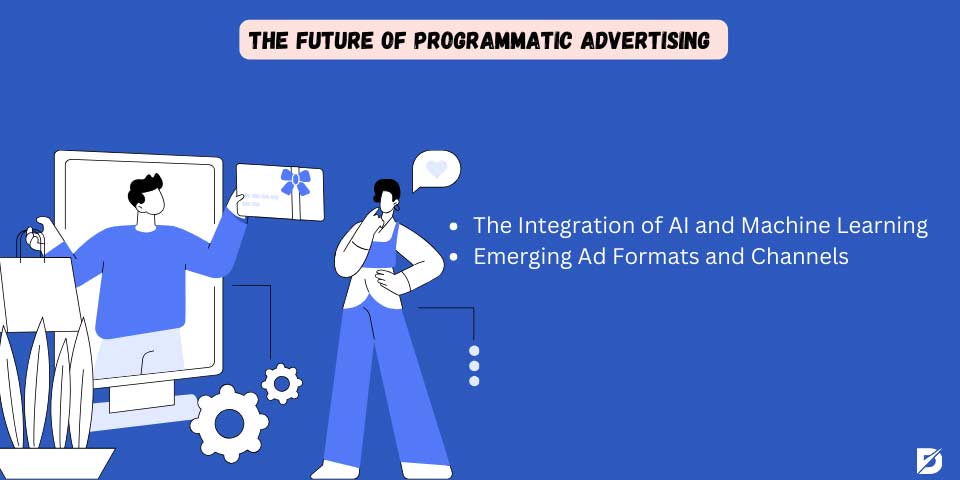
The Future of Programmatic Advertising
Even though we cannot predict the future accurately, programmatic advertising will definitely rely on artificial intelligence because programmatic advertising is improving every day, and it will be better than its previous version in the future.
The Integration of AI and Machine Learning
The best example of integrating AI and machine learning in programmatic advertising is audience segmentation and targeting. AI divides audiences according to their interests, and this process offers accurate targeting. Learn more about AI content generator tools.
Emerging Ad Formats and Channels
Over-the-top (OTT) and Connected TV (CTV) advertising are among the most important channels for programmatic advertising.
Let’s See The Future Together With Programmatic Advertising!
Programmatic advertising is so popular because of its creativity and dynamic nature. And the more interesting thing about programmatic advertising is that it has the potential to improve to be a better version of itself. Congratulations! You are now familiar with the logic of programmatic advertising, and you also know how to use programmatic advertising properly for your website. However, do not forget the fact that you have to follow the latest updates about programmatic advertising if you want to use it to its full potential. Ultimately, you also have to be patient while improving your website.
Frequently Asked Questions About
We can see from the current process and say without a doubt that programmatic advertising will improve the use of artificial intelligence drastically and also will improve in terms of video advertising.
Programmatic advertising has to abide by to privacy system. When using targeting, programmatic advertising relies upon user consent.
Data provides an accurate audience targeting in programmatic advertising. In order to understand the interests of users, the advertisers prefer to use DMP.

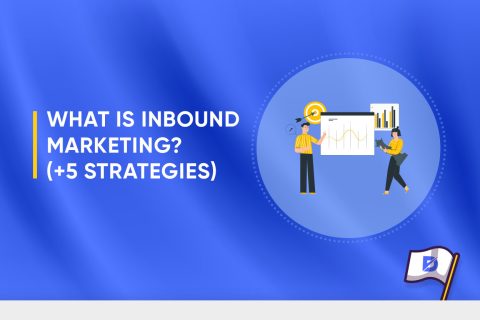


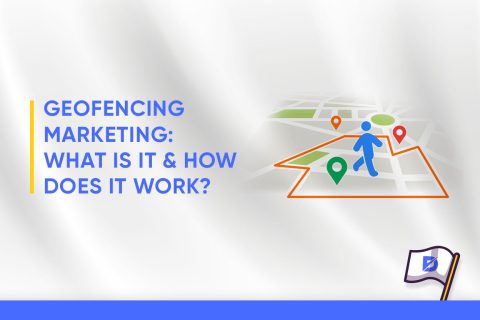
No comments to show.